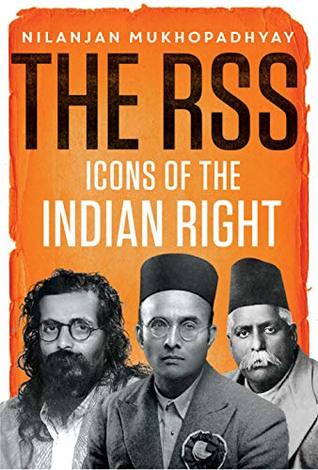More on this book
Kindle Notes & Highlights
It is said that the RSS’ finest hour under the leadership of Madhav Golwalkar was in 1946 ‘when Jinnah’s Direct Action gave them the opportunity of a lifetime. Rather than joining hands with Gandhi and nationalist forces to defeat the partition designs, the RSS came into action to finally prove, through proactive as well as retaliatory actions, that Hindus and Muslims could not live together.’
In the twenty-one years of his career as RSS sarsanghchalak, Balasaheb Deoras shall be best remembered for three major achievements. The first was the agitation launched against the misdemeanours of Mrs Gandhi’s government which led her amongst other reasons, to impose the Emergency in June 1975. The second was in bringing to power the first non-Congress government at the Centre and thereby catapulting the sangh parivar to the mainstream. Third and finally two decades later, his grandiose plan of making the Ram Janmabhoomi agitation the kernel of India’s Right-wing politics in the twenty-first
...more
Even before the RSS had overtly begun to focus on the sphere of education during the Janata period, Balasaheb had initiated steps in this direction several decades ago. The background was Golwalkar’s decision to establish a school in Gorakhpur way back in 1952. Prior to his assuming the mantle of sarsanghchalak, Deoras had given a fillip to his chief’s initiative by expanding the single-school project into a statewide network of schools. Called the Saraswati Shishu Mandir, or the temple of learning, named after the goddess of learning, Saraswati, these schools worked as perfect alternatives
...more
Ironically, although the construction of the Ram temple was the leitmotif of the RSS, VHP, and later the BJP, it was first brought into focus by a former Congress leader. In the early 1980s, Gulzarilal Nanda who had stewarded India twice after the demise of Nehru and Shastri, joined the VHP. In May 1983, he wrote a letter to Indira Gandhi demanding the restoration of temples in Ayodhya, Mathura and Varanasi. When there was no response from her office, the Organiser ‘took up the theme,’79 but fearing the charge of fomenting communal violence, it had treaded cautiously and said, ‘according to
...more
This highlight has been truncated due to consecutive passage length restrictions.
Gandhian philosophy and Socialism, she further elaborated, were conflicting principles because while Gandhi’s focus was on decentralistion (euphemistically referred to as Ram Rajya or an ideal State; associating it with the god as the king of Ayodhya) and self-sufficiency, Socialism made the involvement of State mandatory for the socio-economic upliftment of its people.
In the initial years of the VHP’s campaign, its leaders had argued that the claim of a Ram temple at the disputed site would be eventually ‘proven’. However, the findings by the Archaeological Survey of India (ASI) as part of its Archaeology of Ramayana Sites project, suggested that there was no evidence of any human settlement in contemporary Ayodhya before eleventh century BC. What this meant was that if events described in the epic did occur as believed by several Hindus, they perhaps may have, but not necessarily in the location that the VHP insisted they did. At a time when the sangh
...more
One afternoon in June 2013 at the party conclave in Goa when Advani was all by himself after Modi was named the BJP’s prime ministerial candidate, there was no one around to share his pain. From an entire generation of leaders who had been virtually mentored by him, this was a tragic payback. But politics is cruel and seldom leaves room for niceties, even if it means disrespecting a party elder, and in a party which insists on adhering to ancient Indian values. Today, when one sees him being ignored by his associates in the BJP, one has to be reminded that this was the man who had in a way
...more
From 1986 onwards, when he was appointed general secretary of the VHP, until his death in 2015, Ashok Singhal was undoubtedly the face of the Ayodhya agitation. Although it was L.K. Advani who had kick started the famous Somnath to Ayodhya rath yatra in 1990, and propelled the BJP from near-oblivion to prominence, it was Ashok Singhal who had worked tirelessly to ready the ground which eventually resulted in the Ram temple agitation evolving into a political launch pad for the BJP and its principal Hindutva ideology.
Once he had concluded his public rallies, Ashok Singhal began inching towards the event with great precision. On the morning of 9 November 1989, he’d sent his aide to request the VHP joint general secretary in-charge of the tribal-dominated districts in Bihar, Kameshwar Chaupal who happened to be a Dalit, to accompany him to the site. When the prayers for laying the foundation stone for the Ram temple had begun amidst the chanting of mantras, Chaupal was asked to place the first brick and thereby initiate the building of a grand temple for Lord Ram. With that one master stroke, Ashok Singhal
...more


